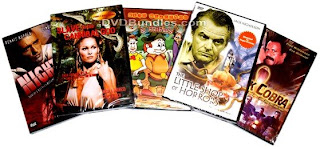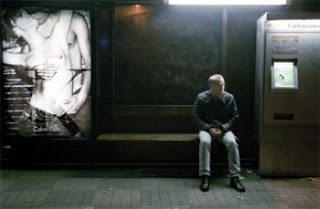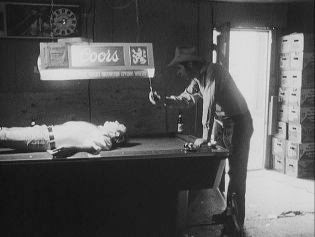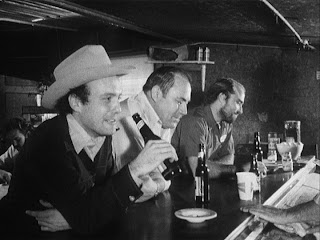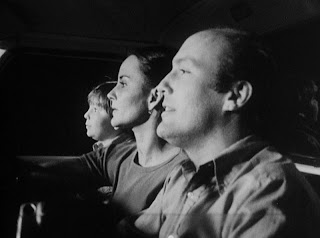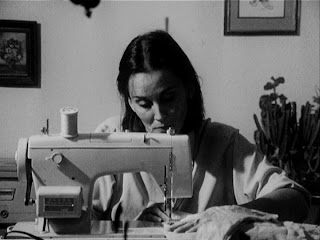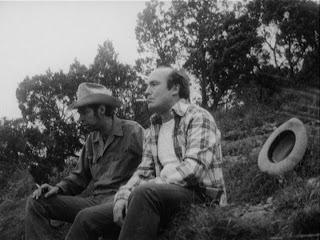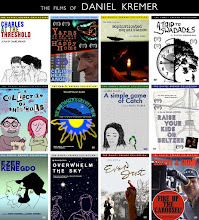
This entry comes following, respectively, a screening event and a definitively earth-shattering movie-news item that will rock the world of cineastes and collectors. Take a deep breath, folks, before you have a look at this IMDb news item. It accounts how Warner Home Video is seeing to it that every single title in their back catalogue will be released and available to the public on DVD. These special back catalogue titles will be issued and sold per demand with custom-made designs, made to order in their original aspect ratios at www.warnerarchive.com. Now, my fellow cinemaniacs, if that doesn't have your jaw dropping to the floor in amazement, I don't know what could shock or delight you. A Hollywood studio is releasing its entire load of titles on video! Everything! In Warner's case, that is 6,800 previously unreleased titles! I just used three exclamation points for three consecutive sentences, but to me, this is absolutely astounding in every damn way. Will other studios take it upon themselves to follow in suit? My brain's mouth is watering. What an image, that.
Secondly, the other night, I was privileged to see Jules Dassin's commercially iffy and (inevitably) controversial 1968 film Up Tight!, a "black-power remake" of John Ford's The Informer (1935), at Film Forum. Truth be told, I own a bootleg of this film, from a broadcast which edited the 104-minute film down to just below 87 minutes, deleting (among other things) a hilariously and, intentionally, over-played, overstylized and downright campy scene in a carnival hall of mirrors. Amusingly enough, any explicit reference to Roscoe Lee Browne's character being homosexual has been removed in this bootleg. So, once again on this blog, I behold the wonders of the city of New York, a place where film enthusiasts can delight in repertory theaters which screen retrospectives much more off the beat and track than anywhere else in the United States. On the occasion of this recent screening of Up Tight!, which is part of Film Forum's Tribute to Jules Dassin, critic J. Hoberman writes in The Village Voice, "A real polarizer in its day, Jules Dassin's lone post-blacklist studio movie was also Hollywood's first expression of black power. Consistent in its inconsistency, it represents Dassin at his worst (stagy, talky, unsubtle) and his best (evocative location work, well-choreographed violence and a passionate identification with the underdog)." On another note, Roger Ebert writes in his February 1968 review, "It's remarkable that a major studio (Paramount) financed and released this film." This last quote I considered when mulling over the film's indescribable aftertaste.

I exited the theater thinking about the film and its place in the Paramount Pictures history of the day. Granted, the film often lapses into laughably preachy segments and, at certain moments, prosthelytizes and moralizes shamelessly and tiresomely (e.g. "Violence breeds violence"), but the film's voice is nonetheless crystalline. Keep in mind that this is mainstream cinema's earliest depiction of the black-power movement, so it is even more remarkable to consider that the film was directed by a white man. The film possesses a distinctly black voice, and many other reviewers of the time commented on how the film felt refreshingly "with it" without ultimately seeming like an old fuddy-dud's vision of pervasive social/racial unrest. And in this way, Up Tight! feels very sophisticated. The bold choice of the Booker T and the MG's soundtrack also gives the story an extra on-the-fringe quality. In all honesty, the film (co-penned by Dassin and actress Ruby Dee) feels incredibly subversive for a "Hollywood production," not only in its choice of subject matter (when such a topic and its topicality were unfathomably atypical and anomalous within the mainstream), but also in its unfettered disregard for conventional sequencing and narrative progression. Towards the film's third act, there is a exquisitely staged climactic confession scene that left me speechless, but the director consciously travels a different road to get to that destination.
Up Tight!, by its very nature, is a polemical film. Opening with actual documentary footage (shot especially for the film) of the funeral march of Martin Luther King, Up Tight! places itself firmly into historical context, and remarkably at that, as if this opening were an attempt to prevent the film from dating in a traditional sense. The word for it is "wise". It also lends an additional weight to the proceedings. Dassin has enough foresight to realize, when other filmmakers were in a bubble naively ignoring the relative vision of the racial upheaval and its place in late 60's popular memory, that he can make his work in Up Tight survive as social document as opposed to just simply quaint sociological motion-picture time-capsule. In the Heat of the Night (1967), for instance, is fundamentally a good film, but it ultimately fails to take into account the times in which it was created. Up Tight! is also perhaps one of the first mentions of Welfare benefits in a major Hollywood motion picture. That's pretty substantial...and gutsy. The very release of the film inherently had political ramifications. As an afterthought, I also want to give a nod to Boris Kaufman's deliciously low-lit cinematography -- and at one point, his camera eye-poppingly defies gravity itself during a death scene.
So what's the point of all this analysis? Okay, here it is. Ebert, to reiterate, posed the question, "How was it that a major studio got behind a risky project like Up Tight!?" Now is my opportunity to pay tribute to Paramount as a studio that took risks more than most other studios in its day, i.e. the Gulf+Western acquisition of Paramount in 1967 and after. When a friend of mine fantasized about other studios following Warner Home Video's lead of releasing its entire back catalogue of titles, he brought up Fox. I immediately responded, "No, Fox was the most capitol-driven studio in Hollywood in every single era. Paramount is where it's at." Paramount established lasting relationships with directors and filmmakers (Roman Polanski and Otto Preminger were both under contract to Paramount as directors), whereas studios like Fox and MGM were intent on establishing lasting relationships simply with celebrity.

Here is another example of Paramount taking on risky material around the same time. Two years following Up Tight!, Paramount financed a film called WUSA (1970), starring Paul Newman, Joanne Woodward and Anthony Perkins. This is another film that is not available on home video, and I own a bootleg of this film as well. The film tells the story of drifter Paul Newman taking a job as a disk-jockey at ultra right-wing radio station WUSA. Anthony Perkins plays a Welfare social worker who gradually realizes WUSA's sinister intentions...to prevent recipients from receiving Welfare benefits. Hmm, sounds like a blockbuster, doesn't it, guys? This was a film made just on the cusp of Robert Evans' takeover of Paramount, but no doubt the viability of the project came directly from the star-power of Newman and Woodward and not the material itself. The movie tanked at the box-office, of course, but the project was nonetheless always a risky business. The first thing we see in both Up Tight! and WUSA is that mountain with the stars around it. This is not even to mention a Paramount film as politically inflamatory as Haskell Wexler's Medium Cool (1969). Even ostensibly more "commercial" films from Paramount in the late 60's had more of an overriding feeling of social critique and examined, in many ways, the socioeconomic divides that segmented the United States. Look at Goodbye, Columbus (1969), and watch how Richard Benjamin's "lower-class Jew" character navigates his way through a noveau riche Jewish family and their world of uber-suburban privilege, class indulgence and materialism, and eventually being somewhat seduced by it, only to "fall from grace" when the nouveau riche patriarch accidentally finds something he shouldn't have found. That film likewise examines something pervasive in the American tableau of the late 60's, albeit in a very delicate and discreet way.
In recent times, Paramount had the best arthouse subsidiary of the majors, Paramount Vantage, until it went belly-up amidst the economic crisis. Compare Paramount Vantage stock to Warner Independent or Focus stock. Since when are films like There Will Be Blood, Margot at the Wedding and Into the Wild bankable in eyes of Hollywood? Particularly in the case of Into the Wild and There Will Be Blood, these are films that could not have been made on-the-cheap, but carried the prestige of good directors working with fine casts. And what kind of studio finances and releases a film like Warren Beatty's Reds (1981), which is of course a Paramount picture? Of course, it being subsidized hinged upon superstar Warren Beatty's involvement, but nonetheless, a film about American socialists still must have been a risky venture.

My mind boggles at the prospect of Paramount following in Warner's footsteps. There are so many titles in the Paramount vaults that have never been released on home video -- titles that are as equally risk-taking as Up Tight! and WUSA which are awaiting rediscovery. In the case of those two films, these are two pieces of historical document, with narratives appropriately "formatted" for such a function. There are many more such titles, believe it or not, that fester in Paramount's vaults. Legend Films, a DVD company which has been releasing some of Paramount's back catalogue titles, has been working its way around to some of its more obscure titles, so we will see what happens. In my opinion, United Artists during the "Arthur Krimm period" (Krimm was head of UA throughout most of the 70's) was also on par with Paramount's love of risk-taking.

Looking back at it, Paramount was the standard for studios in the 70's. It brought in the most capitol, thanks in part to Robert Evans' and Barry Diller's leadership, and still managed to release films that could have very well been poisonous for recouping their investments. So, in the wake of the news about Warner Home Video and the Film Forum screening of Up Tight!, I thought I'd write about it. My mind boggles thinking if any other studio would follow Warner's lead, let alone Paramount. But Paramount's back catalogue is the one I am most enthusiastic about.

